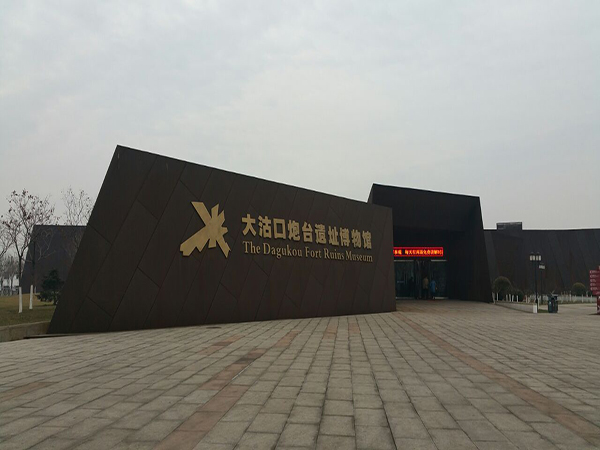Tianjin is the gate to Beijing, and Dagu Fort is ‘the shore of Tianjin’. Dagu Fort got its military importance since Zhu Di, the Yong Le Emperor of Ming Dynasty, removed the capital to Beijing in early Ming Dynastry. The Ming Dynasty set up defenses at Dagu Fort to prevent Japanese Pirates. The Qing Dynasty built up the battery and cannon to strengthen the defense. During modern history, with the imperialism big powers invasion to China, the Dagu Area has been the place of military importance in Northern China. The Humen Fort in Southern China and the Dagu Fort in Northern China were two coast defense barriers in China’s modern history.
The ruins of Dagu Fort lie on south and north bank of Haihe River. It was built by laying bricks and stones and then ramming tabia. During the Second Opium War, the organizational system of the Fort was promoted and the defense system took its shape gradually. In its prosperous period, a strong coast defense system consisting of six batteries of ‘Wei, Zhen, Hai, Men’ and Shitoufeng, one thousand and ten thousand class bronze and ion cannon and affiliated facilities.

Dagu Fort is the history witness of the Chinese Nation anti-invasion and brute force. From 1840 to 1900, in order to capture the economic interests and political privilege, the foreign big powers started four invasions at the Dagu Fort. With solid warships and powerful cannons, they trampled on Dagu area and entered Beijing. They burn the houses, kill the peoples, rob the properties and committed all manners of crimes. They set Yuan Ming Yuan Garden (Winter Palace)—the palace of eastern arts—on fire. The Qing Dynasty signed several unequal treaties under the threat of the invaders guns. The army and the people at Dagu Area fought severely with the strong invaders and revealed courageous national spirit to the rest of the world. Therefore, the great revolutionary tutor Karl Marx wrote the article of ‘A New War in China’ and fulminated against the invaders’ pirate war. He gave credit to China counteract as rational action with justice.
Dagu Fort can be seen today is the ruins of the Dagu Fort that the Qing Dynasty forced to pull down according to ‘Xin Chou Treaty’. Chairman Mao Zedong visited Dagu Fort twice to ponder on the martyrs. After liberation, the Dagu Fort was specified as the national priority cultural relic protection unit by the State Council and was developed as the patriotic education base by the People’s Government of Tianjin Municipality. It was called ‘Ancient Fort of Tianjin’ and one of ten sceneries of Tianjin.
